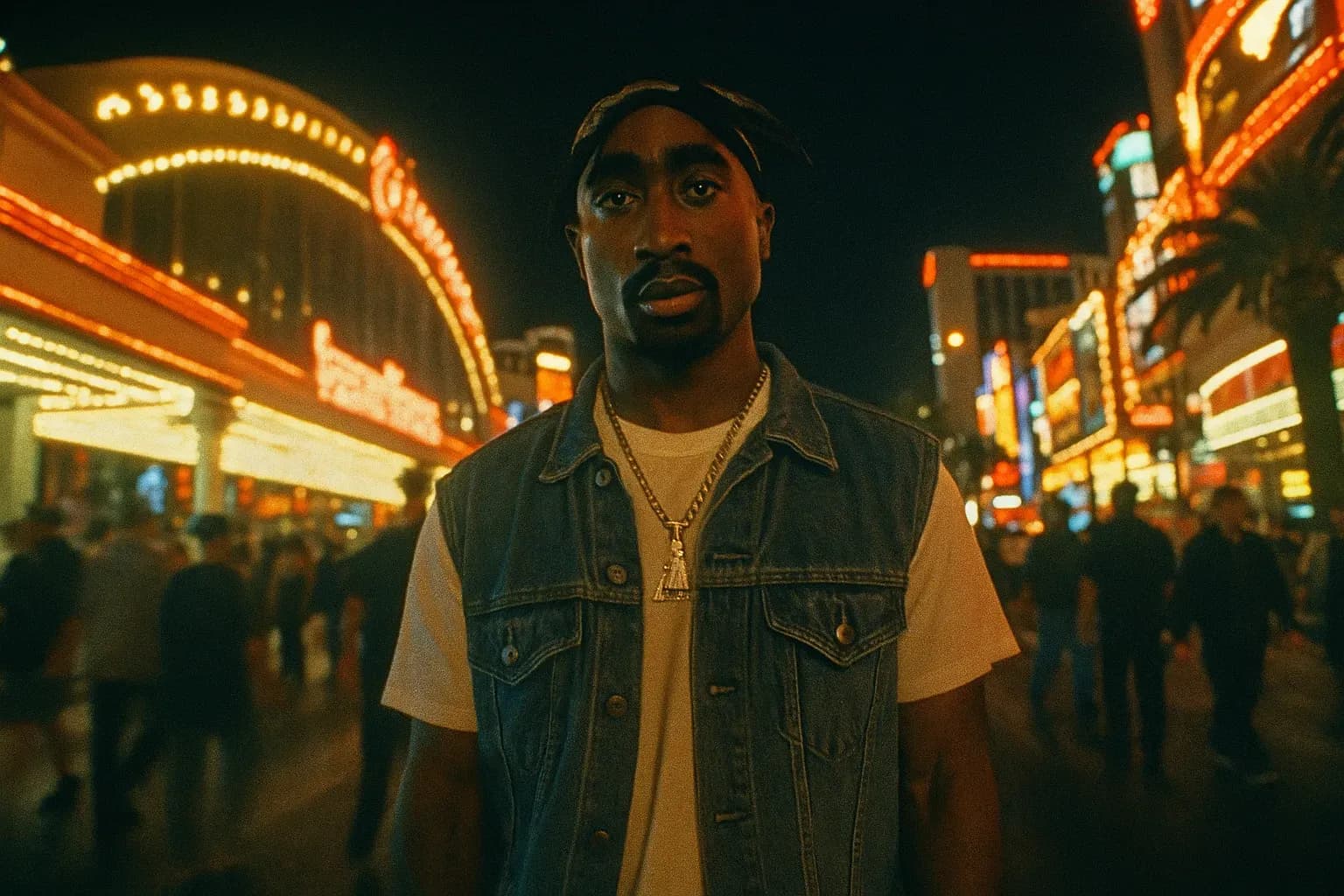Tupac Shakur Murder in Las Vegas: Keefe D Arrested

Sagsdetaljer
Quick Facts
Fatal drive-by shooting: Las Vegas, September 7, 1996
On September 7, 1996, the legendary 25-year-old rapper Tupac Shakur fell victim to a fatal drive-by shooting on the Las Vegas Strip, Nevada, USA. He was in the passenger seat of a black BMW, driven by Death Row Records CEO Suge Knight, when the shots were fired. Tupac Shakur died six days later in the hospital from his injuries. They had just come from a boxing match at the MGM Grand, where an earlier confrontation that same evening with a rival gang member set the stage for what would become one of music history's most notorious and long-unsolved murders – a true high-profile case that captivated the world.
Unsolved mystery: Who killed Tupac Shakur?
The mystery of who fired the fatal shots at Tupac Shakur, and the precise motive behind the act, remained unsolved for decades.
Minute by minute: From Vegas intersection to hospital
It was past 11:15 PM on that fateful night when the BMW stopped at a red light at the intersection of East Flamingo Road and Koval Lane in Las Vegas. Suddenly, a white Cadillac pulled up beside them. From the back seat of the car, a barrage of shots was fired with a .40 caliber Glock pistol. Four bullets hit Tupac: two in the chest, one in the arm, and one in the thigh. One of the shots perforated his right lung, causing severe internal bleeding. Suge Knight was only slightly injured by a fragment in his head. In a panic, he drove away from the scene with a flat tire. Shortly after, they were stopped by the police on Las Vegas Boulevard. Paramedics administered first aid to the dying rapper before he lost consciousness. Six days later, on September 13, 1996, at 4:03 PM, Tupac Shakur was pronounced dead at University Medical Center due to respiratory failure caused by his gunshot wounds.
Murder background: Gang conflicts and Keefe D's motive
To understand the background of the shooting, the investigation points to a deep-rooted gang conflict with origins in Compton. Tupac Shakur was associated with the Mob Piru Bloods, while his alleged attackers belonged to the rival South Side Crips. Earlier that evening, prior to the shooting, Tupac and his entourage had assaulted Orlando "Baby Lane" Anderson, a known member of the South Side Crips, in the lobby of the MGM Grand. The assault allegedly occurred because Anderson had previously stolen a necklace from someone in the Death Row entourage. Anderson's uncle, Duane "Keefe D" Davis, a central figure in the South Side Crips, later described in his autobiography how the assault on his nephew became the direct trigger for their decision to seek revenge that same night.
Failed investigation: Cold case and suspect deaths
The initial police investigation in Las Vegas quickly encountered challenges. Eyewitnesses were unwilling to cooperate, and the investigation suffered from limited resources. The case went cold, a classic unsolved case, for many years, while speculation and various conspiracy theories thrived. Orlando Anderson, long considered the prime suspect but never formally charged with Tupac's murder, was himself killed in a gang shootout in 1998. Two other men, whom Keefe D later identified as being in the white Cadillac during the shooting – DeAndre Smith and Terrence Brown – died in 2004 and 2015, respectively. Only Duane "Keefe D" Davis remained.
Breakthrough: Keefe D's confession and 2023 arrest
A crucial breakthrough in the case came many years later. From 2018 onwards, including in his 2019 book "Compton Street Legend," Keefe D began to publicly admit his involvement in the incident. He stated that he was in the front seat of the white Cadillac and that the shots fired at Tupac's BMW were fired from the back seat on his orders. These public confessions reawakened police interest. In July 2023, police raided Davis's home in Henderson, Nevada, where they seized computers, notes, and a copy of his book. On September 29, 2023, Duane "Keefe D" Davis was arrested and charged with the murder of Tupac Shakur with the use of a deadly weapon.
Trial of Keefe D: Evidence and fight for justice
During a court hearing in October 2023, the prosecution presented evidence supporting the charges against Davis. This included cell phone call data, ballistic reports, and witness testimony from former gang members. However, Davis's defense attorney has dismissed his previous statements as fabrications, created to gain attention and money. The upcoming trial against Davis, the sole survivor from the white Cadillac that night, could potentially bring legal closure to a case that has cast long, dark shadows over the music world for decades. Tupac's mother, Afeni Shakur, fought fiercely for justice for her son until her death in 2016, but never saw anyone charged with the murder.
Tupac's legacy: Murder's aftermath in music history
The murder of Tupac Shakur sent shockwaves through hip-hop culture and tragically highlighted the violence often associated with the genre and its practitioners. His posthumous releases solidified his iconic status, and his premature death became a symbol of the fatal consequences of gang crime and the dangerous balancing act between artistic expression and the brutal realities of the streets. As Keefe D's trial is awaited, the debate continues about other possible accomplices, motives, and the police's handling of the investigation over the years. Regardless of the outcome of the upcoming trial, Tupac Shakur's legacy as an influential voice and a cultural phenomenon will live on. But the night of September 7, 1996, in Las Vegas will forever stand as a dark chapter of lost potential and a truth that was nearly three decades in the making.
Want to read more stories about unsolved cases and gang crime? Follow KrimiNyt and never miss the next case.
Susanne Sperling
Admin